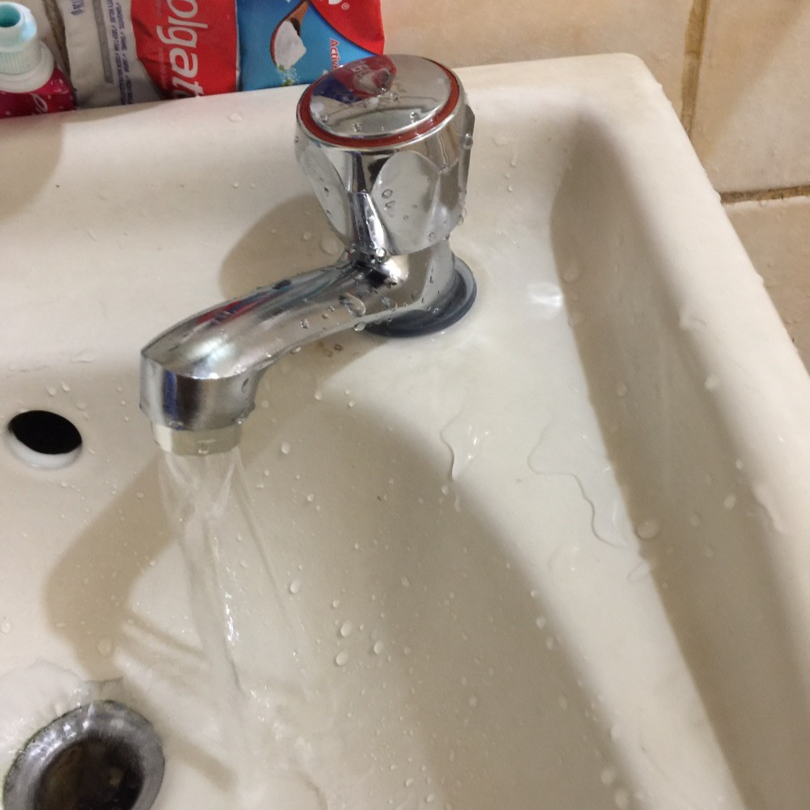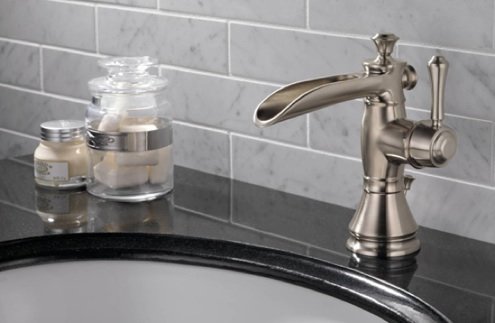Exploring the Significance of Resolving a Dripping Faucet
Exploring the Significance of Resolving a Dripping Faucet
Blog Article
What're your opinions on How to Fix a Dripping or Leaky Faucet ?

Trickling taps could appear like a small aggravation, however their impact exceeds just the aggravation of the sound. From drainage to incurring unnecessary economic costs and wellness risks, disregarding a trickling faucet can result in numerous consequences. In this short article, we'll explore why it's crucial to address this typical family concern immediately and properly.
Wastage of Water
Environmental Impact
Dripping faucets contribute significantly to water wastage. According to the Environmental Protection Agency (EPA), a single tap trickling at one drip per secondly can throw away greater than 3,000 gallons of water per year. This not only pressures water sources however likewise affects communities and wild animals depending on them.
Step-by-Step Guide to Fixing a Dripping Tap
Tools Required
Prior to attempting to take care of a dripping tap, gather the essential tools, consisting of an adjustable wrench, screwdrivers, substitute parts (such as washing machines or cartridges), and plumber's tape.
Typical Tap Issues and Their Solutions
Determine the sort of faucet and the certain problem causing the drip. Typical troubles include worn-out washing machines, rusty valve seats, or malfunctioning O-rings. Describe manufacturer directions or on-line tutorials for detailed guidance on repair services.
Financial Prices
Enhanced Water Expenses
Past the ecological influence, trickling taps can blow up water expenses substantially. The accumulated wastefulness over time converts into higher utility expenses, which could have been stayed clear of with timely repair services.
Prospective Property Damage
In addition, long term leaking can result in damage to components and surface areas surrounding the tap. Water build-up can trigger discoloration, rust, and even architectural problems if left unattended, leading to additional repair expenses.
Health Worries
Mold and Mold Development
The continuous visibility of moisture from a trickling faucet produces an ideal atmosphere for mold and mildew and mildew development. These fungis not only jeopardize interior air top quality but likewise posture health risks, especially for people with respiratory system problems or allergic reactions.
Waterborne Diseases
Stagnant water in leaking taps can end up being a breeding place for microorganisms and various other virus, raising the threat of waterborne conditions. Impurities such as Legionella microorganisms prosper in stagnant water, potentially leading to serious illnesses when ingested or breathed in.
Do it yourself vs. Expert Repair work
Advantages and disadvantages of DIY Fixing
While some may attempt to deal with a leaking tap themselves, do it yourself repairs feature their own collection of difficulties. Without correct understanding and devices, DIY attempts can worsen the issue or result in insufficient repairs, extending the issue.
Advantages of Hiring a Professional Plumber
Employing a specialist plumber ensures that the underlying root cause of the trickling tap is attended to efficiently. Plumbing technicians possess the expertise and equipment to identify and repair faucet problems successfully, conserving time and reducing the threat of more damage.
Environmental Responsibility
Individual Payment to Preservation
Taking obligation for fixing trickling taps lines up with broader initiatives toward water conservation and environmental sustainability. Every individual's activities collectively make a significant impact on maintaining priceless resources.
Lasting Living Practices
By prioritizing punctual fixings and embracing water-saving practices, people contribute to sustainable living techniques that benefit both existing and future generations.
Safety nets
Regular Upkeep Tips
To prevent trickling faucets, execute routine upkeep such as cleaning aerators, evaluating for leaks, and replacing damaged parts without delay. Additionally, think about mounting water-saving devices or upgrading to extra reliable fixtures.
Significance of Prompt Fixes
Addressing dripping faucets as soon as they're discovered avoids additional water wastefulness and prospective damages, eventually saving both water and money over time.
Effect On Property Value
Assumption of Well-Maintained Building
Keeping a property in good condition, consisting of attending to maintenance concerns like leaking faucets, boosts its viewed worth and charm amongst prospective customers or renters.
Impact on Resale Value
Properties with properly maintained plumbing components, including taps, command greater resale worths in the realty market. Attending to leaking taps can add to a favorable impact during residential property evaluations and negotiations.
Final thought
Addressing a trickling faucet goes beyond simple comfort; it's a vital step toward saving water, reducing economic expenses, and guarding health and property. Whether with do it yourself fixings or professional help, doing something about it to fix dripping faucets is a little yet impactful method to promote accountable stewardship of resources and contribute to a healthier, extra sustainable future.
How to Fix a Leaky Faucet: Step-by-Step Repair Guide
A leaky faucet may seem like a simple annoyance, but if it's not fixed promptly, that leak could cost hundreds to potentially thousands. From water damage to mold, mildew, and high water bills, even a tiny leak can be catastrophic if left unattended. Damage like this can even affect the overall value of your home, so it's important to take the right approach for leaky faucet repair. You may need the help of a plumber in some cases, but we've got a few tips you can try on how to fix a leaky faucet before calling the pros.
Four Faucet Types
When you're learning how to fix a leaky faucet, the first step is knowing what kind of faucet you're working with! There are four common types.
Cartridge Faucets
Cartridge faucets come in one- or two-handled varieties. In one-handled cartridge faucets, hot and cold water combines in a single cartridge. In the two-handled versions, hot and cold water are controlled separately and mixed in the faucet.
Ball Faucets
Ball faucets have a single lever you push up and down to adjust the pressure and rotate to change the temperature. A slotted metal ball controls the amount of water allowed into the spout.
Compression Washer Faucets
They're the oldest type of faucet, but they're still used in many homes — especially older ones. Compression faucets have two separate handles that, when turned, raise or lower the washer that seals a water valve. This valve stops water from flowing through the faucet when it is turned off.
Disc Faucets
Disc faucets rarely need to be repaired due to their maintenance-free design. The water flow is controlled by two discs — the upper one raises and lowers against a fixed lower disc, creating a watertight seal. If your disc faucet starts leaking, you may need to replace the seals or clean residue buildup from the inlets.
Fixing a Leaky Faucet
Step 1: Turn Off the Water
Whether you're learning how to fix a leaky bathtub faucet or how to fix a leaky kitchen faucet, always turn off the water supply to your working area when you're fixing a leak. The last thing you want is a flood added to your list of things to fix.
Look for the shutoff valves below your sink or around the tub and turn them clockwise to stop the water flow. If your faucet doesn't have shutoff valves, you may need to turn off the water for the whole house. Check to make sure it's off by turning the faucet on. If nothing comes out, you're ready to start the repair.
Step 2: Take Apart the Faucet
How you disassemble your faucet depends on the type of fixture you have. You can use a flathead screwdriver to remove the caps on top of the handle or handles for cartridge and compression faucets. Inside, you should see handle screws. Unscrew these with a screwdriver to remove the handle.
Disc- and ball-style faucets will typically have an inlet screw near the handle, and removing that will reveal the interior of the faucet.
Detach the Valve Stem
For cartridge- and compression-style faucets, you'll see the inner valve stem or cartridge once you remove the faucet handles. If you have a compression faucet, unscrew the brass valve stem. If you have a cartridge faucet, pull out the cartridge. If your cartridge has been in place for a while, it may require some tools or extra force to remove it due to mineral deposits.
Examine and Replace Parts
Once you've removed the parts, check them out to confirm what needs to be replaced. You may see corroded rubber washers, O-rings, stems, or cartridges. On a ball-style faucet, check the seats and springs for damage.
If you need to repair a leaky disc faucet, check the inlet and seals on the lower disc.
Once you determine what parts must be replaced, visit your local hardware store. Bring the damaged parts with you to ensure you can purchase the correct components to replace them.
Clean Valves and Faucet Cavity
If you've removed a stem or cartridge, you may notice mineral buildup in the faucet's threads. Use white vinegar to clean the valve seat by soaking it for a few minutes, then scrub it away with a soft toothbrush and rinse with warm water. You can also clean the interior of the faucet in the same way.
Reassemble the Faucet
Once your faucet is cleaned and the required parts have been replaced, it's time to reassemble it. Put the pieces back together and slowly turn the water supply back on. Doing this slowly is crucial because too much initial water pressure can damage the new hardware you've just installed.
https://homewarranty.firstam.com/blog/how-to-fix-leaky-faucet

I came across that entry on Should I Repair or Replace a Leaky Faucet? when doing a search on the internet. Do you know about another person who is enthusiastic about the niche? Do not hesitate to share it. Thanks for your time spent reading it.
Report this page